Abstract
A simplified system for routine identification of the six lyogroups of human staphylococci is described. The method is based on the determination of the lytic activity on five different test media and of the phosphatase activity of each isolate. A total of 689 staphylococci isolated from clinical material over a 6-month period were identified according to this simplified system. The same strains were identified in parallel using three other methods designed for routine identification of staphylococci: the Kloos and Schleifer abbreviated scheme (J Clin. Microbiol. 1:82-88, 1975) the scheme proposed by the Subcommittee on the Taxonomy of Staphylococci and Micrococci (Int. J. Syst. Bacteriol. 26:332-334, 1976), and the API STAPH micromethod. Isolated whose identification was in disagreement were identified on a taxonomic level according to the extensive classification scheme of Schleifer and Kloos. In addition, 42 reference staphylococci of known identity were reidentified using the simplified lyogroup system as well as the three other routine methods. The results of this comparative study was detailed and discussed. A primary advantage of the simplified lyogroup system is that it also provides separation of staphylococci from micrococci, which must be performed separately when the other methods are used. Other significant advantages concerned with reliability, speed, and practicality are shown.
Full text
PDF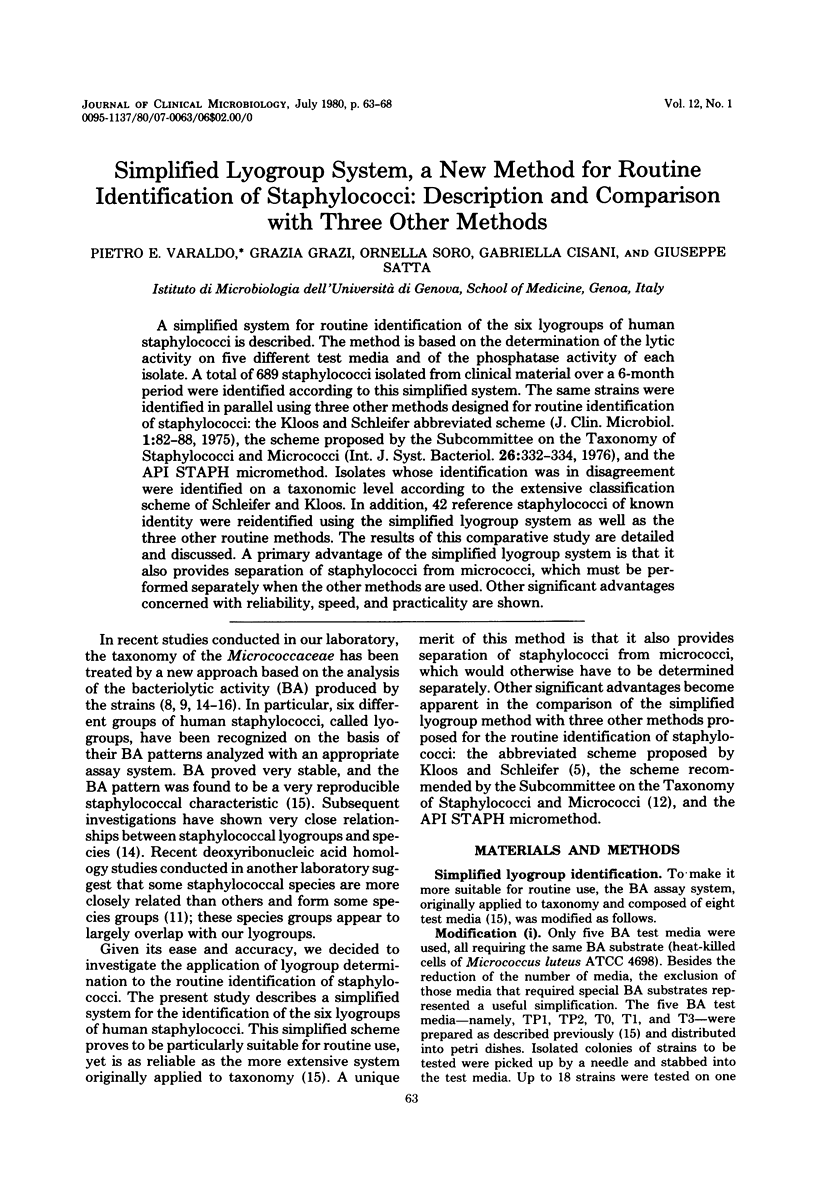
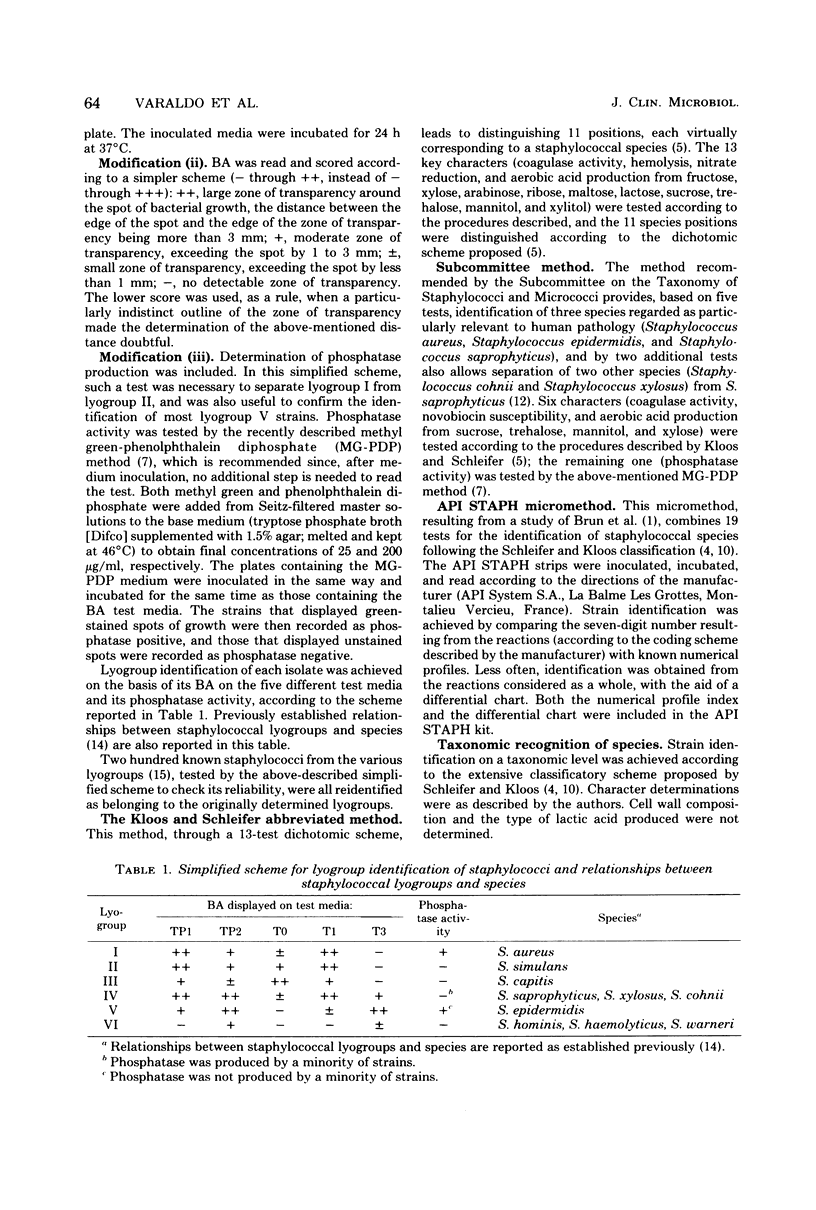
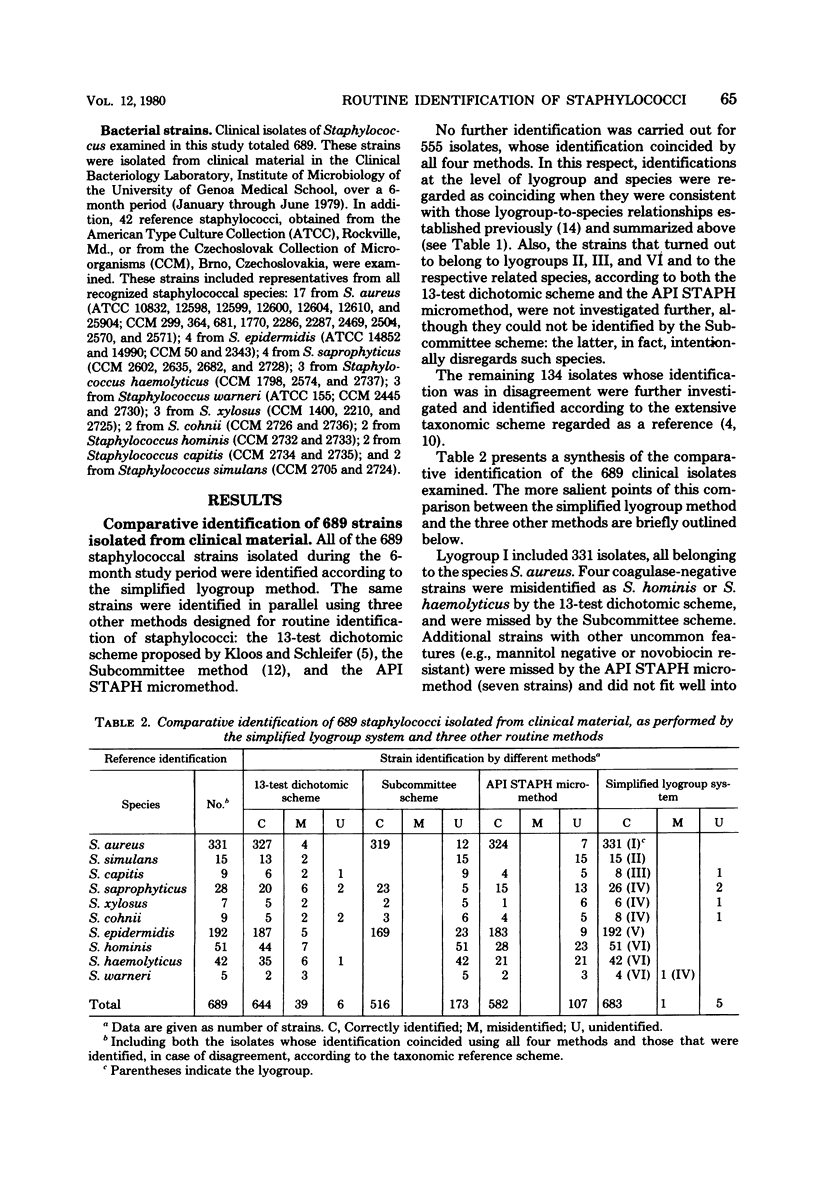
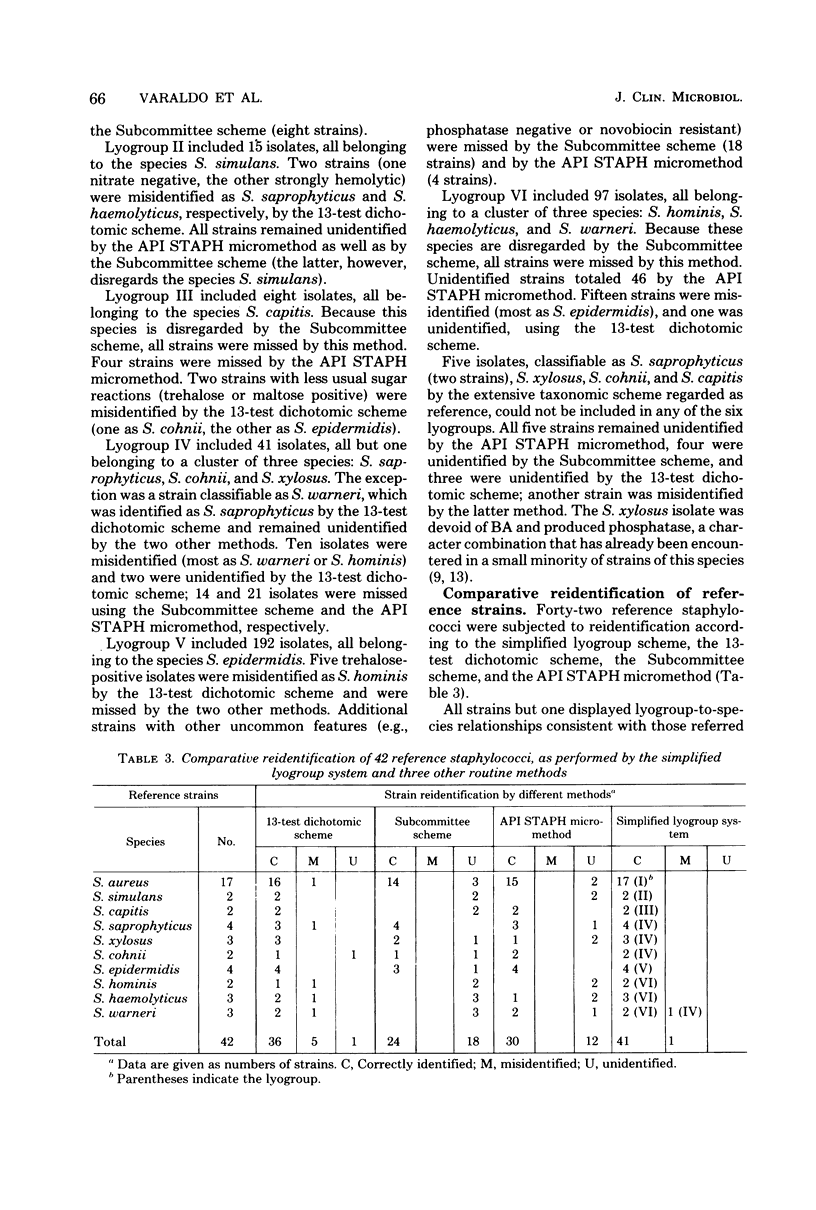
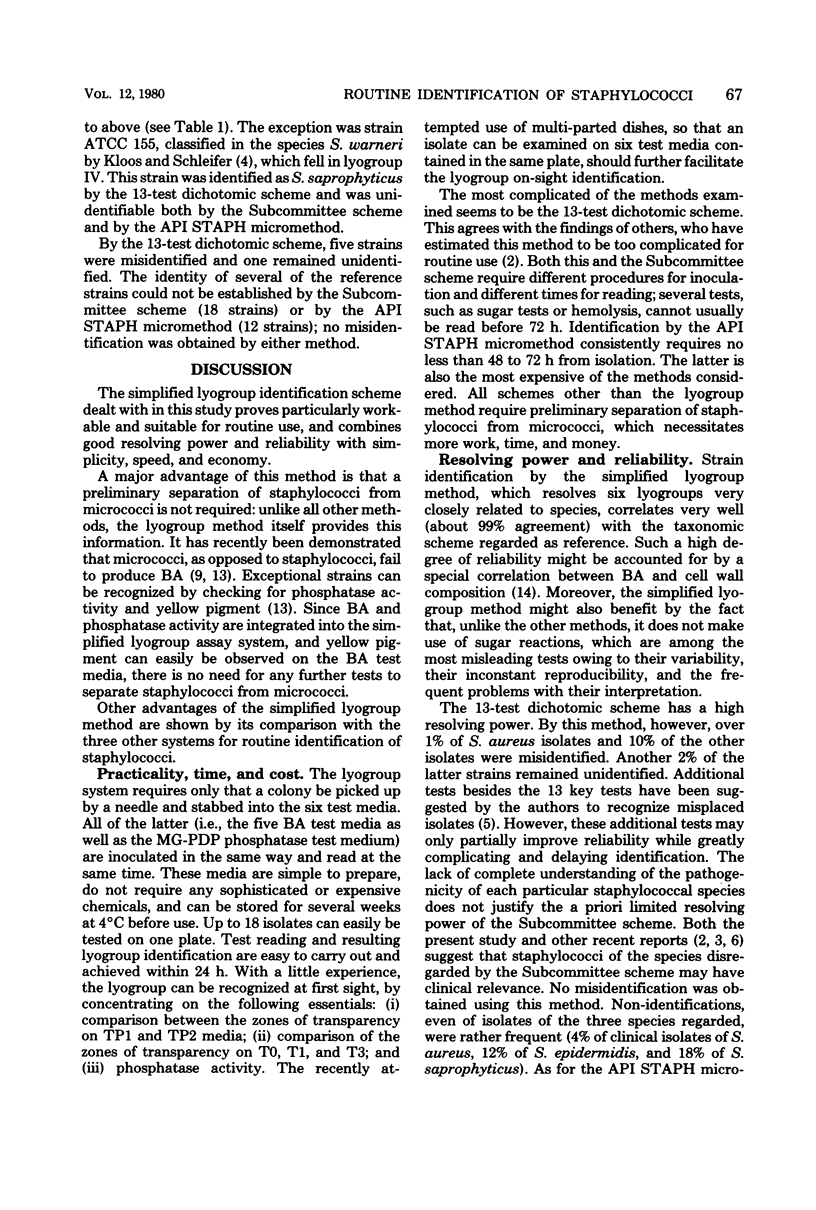
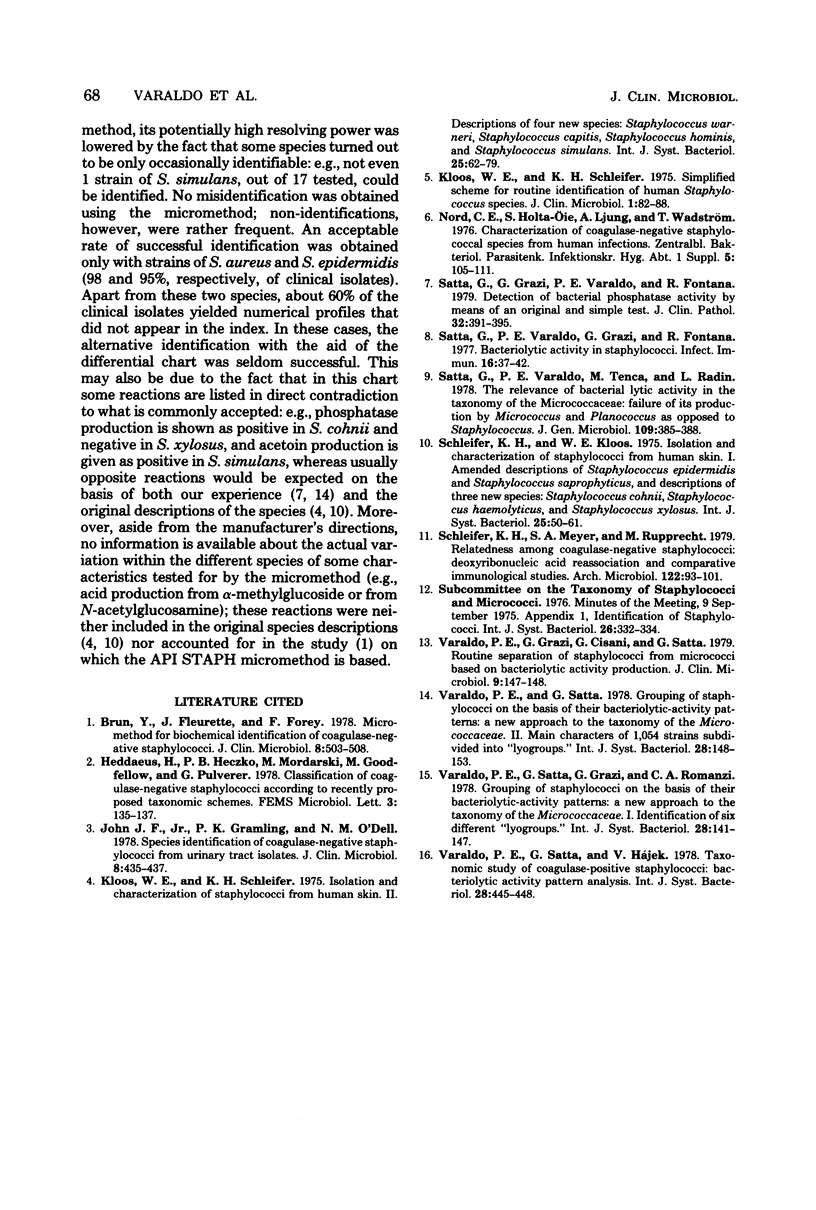
Selected References
These references are in PubMed. This may not be the complete list of references from this article.
- Brun Y., Fleurette J., Forey F. Micromethod for biochemical identification of coagulase-negative staphylococci. J Clin Microbiol. 1978 Nov;8(5):503–508. doi: 10.1128/jcm.8.5.503-508.1978. [DOI] [PMC free article] [PubMed] [Google Scholar]
- John J. F., Jr, Gramling P. K., O'Dell N. M. Species identification of coagulase-negative staphylococci from urinary tract isolates. J Clin Microbiol. 1978 Oct;8(4):435–437. doi: 10.1128/jcm.8.4.435-437.1978. [DOI] [PMC free article] [PubMed] [Google Scholar]
- Kloos W. E., Schleifer K. H. Simplified scheme for routine identification of human Staphylococcus species. J Clin Microbiol. 1975 Jan;1(1):82–88. doi: 10.1128/jcm.1.1.82-88.1975. [DOI] [PMC free article] [PubMed] [Google Scholar]
- Satta G., Grazi G., Varaldo P. E., Fontana R. Detection of bacterial phosphatase activity by means of an original and simple test. J Clin Pathol. 1979 Apr;32(4):391–395. doi: 10.1136/jcp.32.4.391. [DOI] [PMC free article] [PubMed] [Google Scholar]
- Satta G., Varaldo P. E., Grazi G., Fontana R. Bacteriolytic activity in staphylococci. Infect Immun. 1977 Apr;16(1):37–42. doi: 10.1128/iai.16.1.37-42.1977. [DOI] [PMC free article] [PubMed] [Google Scholar]
- Satta G., Varaldo P. E., Tenca M., Radin L. The relevance of bacterial lytic activity in the taxonomy of the micrococcaceae: failure of its production by Micrococcus and Planococcus as opposed to Staphylococcus. J Gen Microbiol. 1978 Dec;109(2):385–388. doi: 10.1099/00221287-109-2-385. [DOI] [PubMed] [Google Scholar]
- Schleifer K. H., Meyer S. A., Rupprecht M. Relatedness among coagulase-negative staphylococci: deoxyribonucleic acid reassociation and comparative immunological studies. Arch Microbiol. 1979 Jul;122(1):93–101. doi: 10.1007/BF00408051. [DOI] [PubMed] [Google Scholar]
- Varaldo P. E., Grazi G., Cisani G., Satta G. Routine separation of staphylococci from micrococci based on bacteriolytic activity production. J Clin Microbiol. 1979 Jan;9(1):147–148. doi: 10.1128/jcm.9.1.147-148.1979. [DOI] [PMC free article] [PubMed] [Google Scholar]


